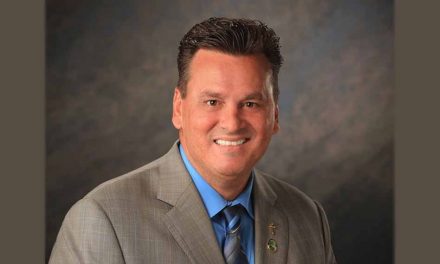Osceola County received a record 36,306 mail-in ballots during its primary election earlier this month. But 451 of those ballots were rejected, or about 1.24 percent, according to the Supervisor of Elections office.
That’s higher than the 2018 general election rejection rate of 1.06 percent.
With the November election right around the corner, every vote is important. So, why were hundreds of ballots counted out?
Here’s how the numbers break down:
- 349 of the 451 rejected ballots had signature issues. Either the voter didn’t sign the outside envelope, or their signature didn’t resemble the one on file with the Supervisor of Elections.
- 102 of the 451 mail-in ballots were rejected for other various reasons.
- 655 ballots were originally rejected, but 204 voters were able to “cure” or fix issues in time to count for the Aug. 18 primaries.While signature issues accounted for the bulk of rejections in Osceola (77 percent), there’s some interesting stories behind the other 102 rejected votes.
According to Supervisor of Elections Mary Jane Arrington, those 102 ballots were rejected because:
- The voter no longer lived in Osceola County.
- The voter was dead.
- A ballot for a different election (including the presidential primary in March and the special sales tax vote last year) was returned instead of the August primary ballot.
- A voter filled out their spouse or relative’s mail-in ballot instead of requesting their own.
- A voter switched parties after receiving a mail ballot. A second ballot with their new party was sent out, but the voter still returned the first one instead.Receiving a ballot from a dead voter is extremely rate, said SOE Community Relations Manager Kari Ewalt — but it can happen.
“Someone may vote their mail ballot, drop it in the mail and then pass away the next day,” Ewalt said. “But if they’re dead by the time we receive it, we can’t count it.”
A handful of ballots — about 10 — were received one to two days after Election Day. In all, 75,186 people requested mail ballots for this year’s primary, giving a return rate of about 48.3 percent.
Make sure your signature is correct
Don’t let rejection rates keep you from voting by mail. If you want your vote to count, just make sure to follow the instructions.
First, it’s essential to avoid signature issues.
Two-thirds (67 percent) of ballots rejected for this reason were mailed in by voters who simply forgot to sign the outside envelope.
The other 114 had signatures that didn’t resemble the one on file with the SOE.|According to Arrington, six different people at her office and the Canvasing Board review these ballots, and they all must agree that the signature is just too different to count.
“It has to be at a point where we can’t connect that the voter actually signed the ballot,” Arrington said. “It doesn’t matter if you forgot to add your middle initial or some small detail like that. We’re not looking for that. We just need to be reasonably sure the voter signed this ballot.”
And even if your ballot is flagged for a signature issue, the SOE office will always notify you and give you a chance to fix it.
Staff even looks at any old signatures on file for a voter, in case you resorted back to your old handwriting.
Your handwriting can change over time as you age. If you think your signature is different now, you can request a form from the SOE to update it. You can call them at 407-742-6000 to learn more.
Interestingly, young people in Osceola County are the most likely to have their mail-in ballots rejected. A study by the ACLU found that during the 2018 general election, people 18-21 and 22-25 had the highest rejection rates of any age group, at 1.34 percent and 2.13 percent, respectively. This is a common trend across the state, in part because young voters can be unfamiliar with voting by mail or may still be developing their signatures.
Osceola County saw its highest voter turnout rate for a primary election in more than 25 years in 2020, with 53,891 total ballots cast, accounting for a 23.81 percent turnout.




















